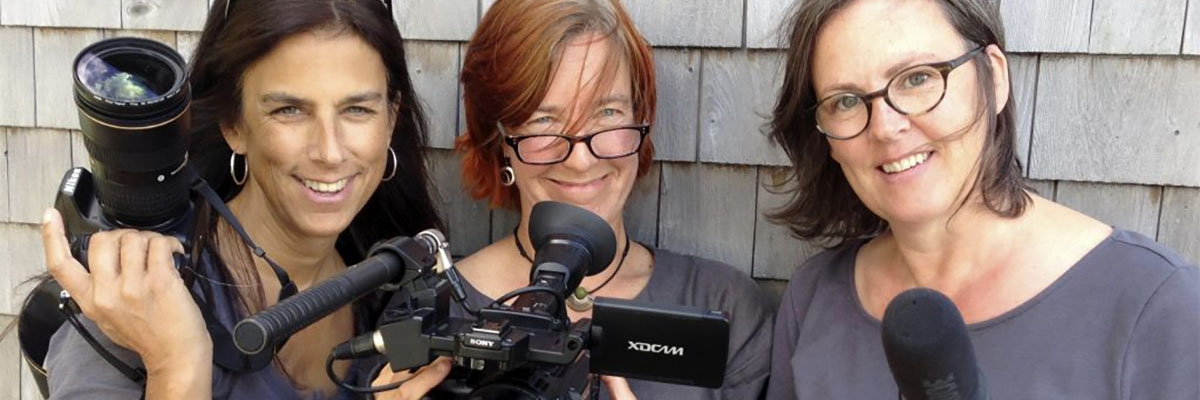Gender imbalance in the film industry
30 March 2021

Nance Ackerman, Ariella Pahlke and Teresa MacInnes, co-directors of the documentary Conviction, an award-winning collaborative film that envisions alternatives to prison through the eyes of women behind bars, and what they would have needed in their lives to avoid incarceration. Photo: Kent Nason
Although gender inequity in the film industry has been a well-documented problem for decades, the industry remains heavily dominated by men. That fact was underscored for Australian researcher Deb Verhoeven when she received an email showing women’s participation rates in her country’s film industry were lower than when she had started working as an industry lobbyist 30 years beforehand. Now Verhoeven, a Canada 150 Research Chair in Gender and Cultural Informatics at the University of Alberta, is launching a new project that looks at the issue from a different angle.
The wrong data sends the wrong message
The realization that the industry hadn’t changed in all that time was jarring for Verhoeven. Her first reaction was a sense of failure,as though she hadn’t done enough. Her second was to question the data itself—and whether it was even the right data to be looking at.
Data on labour market inequity usually takes the form of headcounts or participation rates, but Verhoeven says those numbers tell the wrong story. She realized that the real problem isn’t that the labour numbers are unequal; it’s that the relationships in the industry are unequal.
“Focusing on women’s participation masks that issue,” she says. “It implies that they’re the ones who need to do something differently, but they’re not the ones with the power to change things.”
Looking to the source of the problem
Instead, she started collecting and analyzing data on men in the film industry: their behaviours, their social networks, who they do and don’t work with. She believes this kind of data can help identify the key players who are creating and upholding inequity, as well as what motivates them to do so. Those details can then inform the development of policies aimed at changing those behaviours.
In one of her recent studies, she found consistent “headcount” results across the film industries in Australia, Germany and Sweden. In all three countries, over a 10-year period, 40 to 45% of male movie producers had never hired a woman for a senior creative position, while 75% had delivered projects with just one or no women in a creative role—for a total of 80% of all projects with more men than women on the creative team.
Yet despite these statistical similarities, Verhoeven’s research found that the networks underpinning the creative teams were vastly different from country to country.
“That made it clear we weren’t looking for a single, one-size-fits-all policy,” says Verhoeven. “Even though the problem looks the same everywhere, the people and the networks they create are totally different, so we need specific solutions for the industry in each country.”
Testing new solutions
To find those solutions, Verhoeven is working with research partners in Germany, Scotland and Canada to conduct behavioural and network analysis as part of the Gender Equity Policy Analysis project, supported by SSHRC, the German Research Foundation and the UK Economic and Social Research Council through the Open Research Area funding agreement.
Following data collection, including quantitative data as well as qualitative interviews with industry decision-makers, Verhoeven will use a tool developed at the University of Alberta to model the data and conduct “what if” analyses. She’ll test different policy solutions such as adding more women, removing men unwilling to work with women, or giving men more opportunities to share their power.
“This kind of analysis lets us start framing the conditions for what we’d like to see, instead of just describing a bad situation,” says Verhoeven.
Throughout the project, which kicks off in April 2021, Verhoeven and her partners plan to hold summits and work closely with industry partners to ensure their findings and recommendations can be easily applied.
While the primary goal of the project is to change the face of the labour market in the film industry, Verhoeven believes it’s about much more than that.
“Changing who works in the industry changes the kinds of stories that get told,” she says. “That changes who’s being reached by the stories, and how they see themselves represented—and that can change their perspectives and inspire them to new ambitions.”